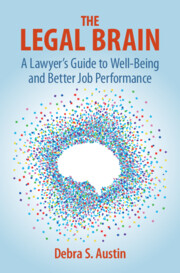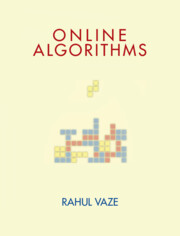Refine search
Actions for selected content:
48569 results in Computer Science
Opening a conversation on responsible environmental data science in the age of large language models
-
- Journal:
- Environmental Data Science / Volume 3 / 2024
- Published online by Cambridge University Press:
- 09 May 2024, e14
-
- Article
-
- You have access
- Open access
- HTML
- Export citation
4 - The Lawyer’s Brain
-
- Book:
- The Legal Brain
- Published online:
- 08 May 2024
- Print publication:
- 09 May 2024, pp 57-64
-
- Chapter
- Export citation
1 - The Impaired Lawyer
-
- Book:
- The Legal Brain
- Published online:
- 08 May 2024
- Print publication:
- 09 May 2024, pp 9-25
-
- Chapter
- Export citation
Index
-
- Book:
- The Legal Brain
- Published online:
- 08 May 2024
- Print publication:
- 09 May 2024, pp 251-258
-
- Chapter
- Export citation
12 - Developing an Action Plan for the Neuro-intelligent Lawyer
-
- Book:
- The Legal Brain
- Published online:
- 08 May 2024
- Print publication:
- 09 May 2024, pp 189-201
-
- Chapter
- Export citation
2 - The Spectrum from Languishing to Flourishing
-
- Book:
- The Legal Brain
- Published online:
- 08 May 2024
- Print publication:
- 09 May 2024, pp 26-42
-
- Chapter
- Export citation
11 - Enhancing Mental Strength
-
- Book:
- The Legal Brain
- Published online:
- 08 May 2024
- Print publication:
- 09 May 2024, pp 154-188
-
- Chapter
- Export citation
Co-designing versatile quadruped robots for dynamic and energy-efficient motions
-
- Article
-
- You have access
- Open access
- HTML
- Export citation
5 - Memory, Knowledge, and Building Expertise
-
- Book:
- The Legal Brain
- Published online:
- 08 May 2024
- Print publication:
- 09 May 2024, pp 65-68
-
- Chapter
- Export citation
Acknowledgments
-
- Book:
- The Legal Brain
- Published online:
- 08 May 2024
- Print publication:
- 09 May 2024, pp xi-xii
-
- Chapter
- Export citation
Dedication
-
- Book:
- The Legal Brain
- Published online:
- 08 May 2024
- Print publication:
- 09 May 2024, pp v-vi
-
- Chapter
- Export citation
Contents
-
- Book:
- The Legal Brain
- Published online:
- 08 May 2024
- Print publication:
- 09 May 2024, pp vii-x
-
- Chapter
- Export citation

The Legal Brain
- A Lawyer's Guide to Well-Being and Better Job Performance
-
- Published online:
- 08 May 2024
- Print publication:
- 09 May 2024
On planarity of graphs in homotopy type theory
-
- Journal:
- Mathematical Structures in Computer Science / Volume 34 / Issue 4 / April 2024
- Published online by Cambridge University Press:
- 08 May 2024, pp. 281-321
-
- Article
-
- You have access
- Open access
- HTML
- Export citation
Intraday residual transfer learning in minimally observed power distribution networks dynamic state estimation
-
- Journal:
- Data-Centric Engineering / Volume 5 / 2024
- Published online by Cambridge University Press:
- 08 May 2024, e13
-
- Article
-
- You have access
- Open access
- HTML
- Export citation

Online Algorithms
-
- Published online:
- 07 May 2024
- Print publication:
- 16 November 2023
Revisiting Taylor’s analysis of the Trinity test
-
- Journal:
- Data-Centric Engineering / Volume 5 / 2024
- Published online by Cambridge University Press:
- 07 May 2024, e11
-
- Article
-
- You have access
- Open access
- HTML
- Export citation
A virtual reality-based dual-mode robot teleoperation architecture
-
- Article
-
- You have access
- Open access
- HTML
- Export citation
Special Issue on Theory and Applications of Models of Computation TAMC 2022
-
- Journal:
- Mathematical Structures in Computer Science / Volume 34 / Issue 3 / March 2024
- Published online by Cambridge University Press:
- 07 May 2024, p. 161
-
- Article
-
- You have access
- HTML
- Export citation
